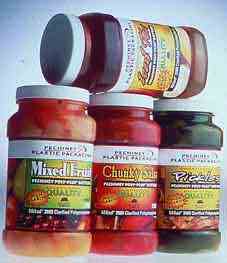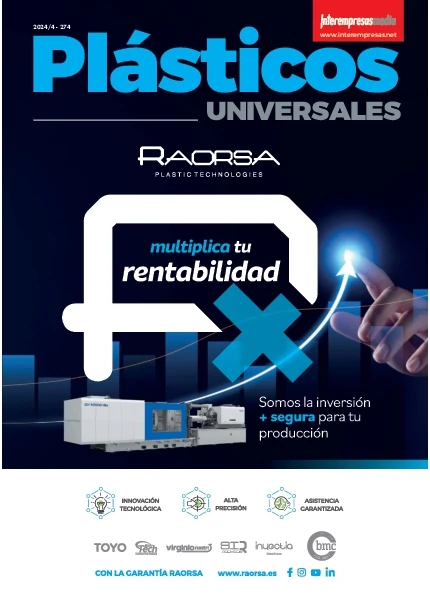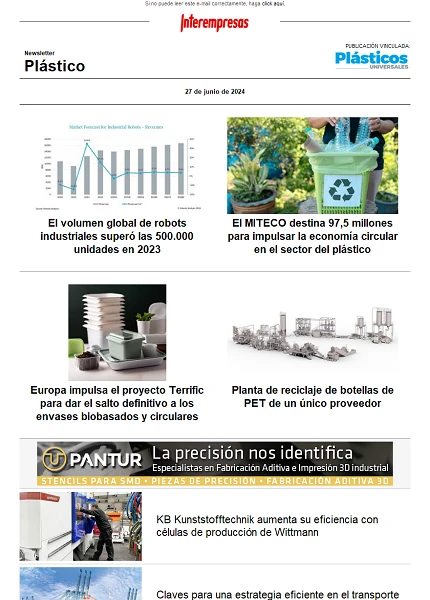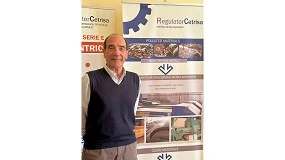Analysis of volatile compounds in plastics
Engineering for product development and testing. AIJU.15/09/2002
The formation of volatile substances with effect of Degradative processes, is perhaps the most interesting case, because it provides valuable information regarding the processing of different pieces and even in the processes of manufacture of raw materials being able to establish the differences between the batches or manufacturers.
Polyethylene, for example, emits gaseous organic compounds once he has synthesized such as ethane, ethylene, propane, and polypropylene. The analysis of these products it is essential in order to control the toxicity of the product as well as the control of the smell and taste in foods in food packaging applications.
Other volatile organic compounds such as benzene, toluene, Ethylbenzene, xylene and cumene constitute one of the most important environmental pollutants because of its well-known toxicity. This means that their control is necessary, especially in the case of benzene, for which a Community regulation, Directive 82/806/EEC which is not allowed content of benzene is available free in toys or parts of toys more than 5 mg/kg.
Sets the list of starting substances and additives allowed for the development of these materials in the field of materials in contact with food, for example, Directive 90/128/EEC and its subsequent amendments. Some of the permitted starting substances contain restrictions and limitations in terms of its presence in the final product. This is the case of vinyl chloride monomérico, which has its own regulation in document 78/142/EEC where it states that, for such products, the residual monomer must not exceed 1 mg/kg.
The procedures applied to the analysis of the components in the plastics are not effective when it comes to analyze because of volatile compounds on the one hand to the loss of volatile and to interference when using procedures such as the extraction of the material and the subsequent analysis. To approach the problem of the analysis of Volatiles in polymeric materials are available methods that include: global warming, merger and dissolution of the sample. The most widely used method due to the speed, versatility and automation is based on the technique of "space head" (head-space). Such a technical is to establish a balance between gas phase and the (solid or liquid) sample of volatile components in the vial containing the sample. The technique is useful for the determination of the emission of volatile when the sample is subjected to heating. This is the case of certain toys, for example, consisting of a paste for modeling which is cured in an oven. Control in the emission of benzene, among other compounds, in such products is vital to ensure compliance with the above-mentioned directive.
By head space analysis is the analysis of the phase steam that is in equilibrium with a solid or liquid sample in a sealed vial. How to operate is to place the sample in the road and subject to certain conditions of time and temperature sufficient to ensure that balance. Once the balance has reached takes a certain amount of vapor phase, and is inserted into a gas chromatograph in which volatile components are separated, identified and quantified. The technique of space in the lead is very established and even appears as essential for certain applications that even are standard, as it is the case of the determination of residual solvents in flexible packaging materials [1].
Thus there are numerous studies that analyses the emission of volatile substances, in particular for the polyethylene, whose implementation previously mentioned for food contact materials makes the analysis of Volatiles is especially of interest, since it is possible the determination of the substances that generate undesirable odor [2]. The analysis of residual styrene in polystyrene is also interesting, both from the point of view of materials in contact with food as from the point of view of the field of the toy in which there are certain games based on the experimentation and the formation of figures of polystyrene. Test methods for the determination of the residual styrene in this type of articles are currently being. A customary procedure is the dissolution of the polymer and subsequent analysis through space at the head of such dissolution. This applies to the analysis of monomers volatile as chloride of vinyl and butadiene to the level of 0.05 ppm and acrylonitrile to 0.5 ppm [2]. The technique is also common in the determination of volatile substances in inks, which makes it of interest to the field of the toy made that many methods of analysis for substances that are currently in phase of development ranging from additives to waste or products generated during processing [3].

[2] Crompton, "Chemical analysis of additives in plastics", Second Edition. Pergamon Press, 1977.
[3] Rastogi, S.C. "analysis of organic solvents in printing inks by headspace gas chromatography-mass spectroscopy". High resolution chromatography, Sep. 1991, 14, 587-589


































